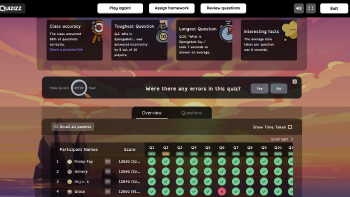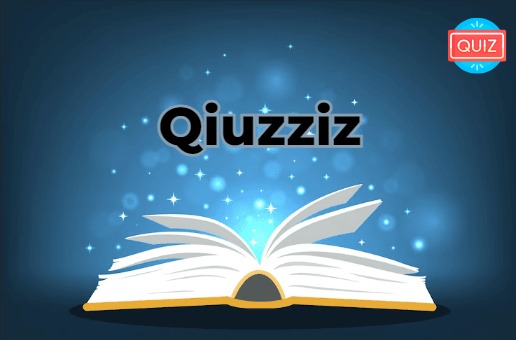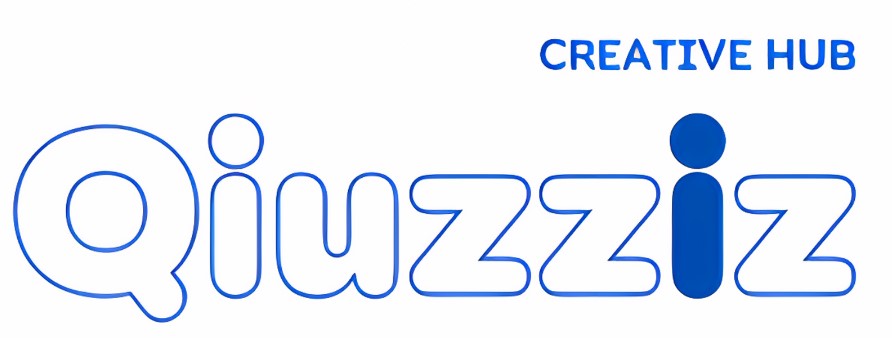Boosting Student Engagement with Quizizz in 2024

In the ever-evolving landscape of education, educators are constantly seeking innovative ways to captivate and engage students. One powerful tool that has emerged as a game-changer in the classroom is Qiuzziz, an interactive learning platform that transforms quizzes into engaging and gamified experiences. This comprehensive guide will explore the numerous benefits of using Quizizz quizzes in your classroom, provide practical tips for creating engaging quizzes, and offer strategies for maximizing student engagement and learning.
Interactive Learning: The Power of Quizizz in the Classroom

Quizizz is a free online platform that allows educators to create, share, and play interactive quizzes with their students. It seamlessly integrates with various learning management systems (LMS) and supports diverse learning styles, making it a versatile and adaptable tool for classrooms of all sizes. The platform offers a wide range of question types, including multiple-choice, true/false, fill-in-the-blank, and open-ended responses, catering to different subject areas and skill levels.
Gamification: Unleashing the Fun in Learning
One of the key advantages of Quizizz is its ability to transform the traditional quiz experience into a captivating and competitive game. By incorporating game-like elements, such as leaderboards, timed responses, and personalized avatars, Quizizz taps into the natural human desire for achievement and social interaction. This gamification approach has been proven to increase student engagement, motivation, and overall learning outcomes.
Personalized Learning Experiences
Quizizz’s adaptive features allow for personalized learning experiences. Students can work at their own pace, receive immediate feedback, and even compete against their classmates in real-time. This individualized approach caters to diverse learning styles and ensures that each student is actively engaged and challenged at their level.
Seamless Integration with Existing Workflows
The seamless integration of Quizizz with various learning management systems (LMS), such as Google Classroom, Canvas, and Schoology, makes it a versatile tool that can be easily incorporated into existing classroom workflows. This integration allows educators to manage their classes, assign quizzes, and track student progress all within a familiar and streamlined environment.
Engaging Students Through Gamification: Quizizz’s Unique Approach

Quizizz’s gamification features are the key drivers behind its ability to captivate students and foster active engagement in the learning process. Let’s explore some of the unique elements that make Quizizz quizzes so engaging:
Leaderboards and Competitive Elements
Quizizz incorporates competitive elements, such as leaderboards, where students can track their progress and compare their scores with their peers. This friendly competition encourages students to strive for higher scores, pushing them to engage more deeply with the content and maintain a high level of focus throughout the quiz.
Timed Responses and Instant Feedback
Quizizz quizzes often include a timed element, where students must respond to questions within a set time frame. This sense of urgency and the immediate feedback on their responses keep students on their toes, preventing them from becoming passive participants.
Personalized Avatars and Customization
Students can create their own unique avatars and customize their profiles, fostering a sense of ownership and investment in the platform. This personalization element further enhances the engaging and immersive nature of Quizizz quizzes.
Rewards and Achievements
Quizizz offers a range of rewards and achievements, such as points, medals, and badges, that students can earn based on their performance. These gamification elements provide a sense of accomplishment and motivation, encouraging students to continue engaging with the platform and striving for greater success.
Creating Dynamic Quizzes: Tips and Tricks for Effective Quizizz Use

Designing engaging and effective Quizizz quizzes requires a strategic approach. Here are some tips and tricks to help you create dynamic and impactful quizzes:
Aligning Content with Learning Objectives
Before creating a Quizizz quiz, it’s crucial to align the content and questions with your specific learning objectives. This ensures that the quiz not only engages students but also effectively assesses their understanding and progress towards the desired learning outcomes.
| Learning Objective | Corresponding Quizizz Question |
|---|---|
| Understand the basic principles of photosynthesis | Which of the following is not a requirement for photosynthesis to occur? A. Sunlight B. Water C. Carbon dioxide D. Nitrogen |
| Analyze the role of mitochondria in cellular respiration | Explain the primary function of mitochondria in the process of cellular respiration. |
Varied Question Types and Formats
Quizizz offers a range of question types, including multiple-choice, true/false, fill-in-the-blank, and open-ended responses. Incorporating a diverse mix of question formats not only keeps students engaged but also allows you to assess different levels of understanding and critical thinking skills.
- Multiple-choice questions
- True/false questions
- Fill-in-the-blank questions
- Open-ended response questions
Incorporating Multimedia Elements
Quizizz allows you to integrate various multimedia elements, such as images, videos, and interactive simulations, into your quiz questions. These visual and interactive elements can help reinforce key concepts, provide context, and create a more immersive learning experience for your students.
Providing Immediate Feedback and Explanations
Quizizz’s instant feedback feature allows students to receive immediate responses to their answers, including the correct answer and explanations. This feedback loop not only engages students but also helps them identify areas for improvement and reinforces their understanding of the material.
Encouraging Collaboration and Discussion
Quizizz quizzes can be designed to foster collaboration and discussion among students. You can create group-based challenges or open-ended questions that encourage students to work together, share their perspectives, and engage in meaningful discussions around the quiz content.
Assessing Student Learning with Quizizz: Real-Time Feedback and Insights
Quizizz goes beyond traditional quizzes by providing educators with valuable real-time feedback and insights on student performance. These assessment tools can help you make data-driven decisions and tailor your teaching strategies to better support student learning.
Real-Time Student Performance Tracking
Quizizz’s dashboard allows you to monitor student progress in real-time, displaying individual and class-wide performance metrics. This data can help you identify areas where students are struggling, enabling you to provide timely interventions and adapt your teaching approach accordingly.
Detailed Analytics and Reporting
The Quizizz platform offers comprehensive analytics and reporting features, giving you a deeper understanding of student learning. You can access detailed reports on individual student performance, question-level analytics, and overall class trends, empowering you to make informed decisions and optimize your instructional practices.
Adaptive Learning and Personalized Pathways
Quizizz’s adaptive features can automatically adjust the difficulty and content of subsequent questions based on a student’s performance. This personalized approach ensures that each student is challenged at their appropriate level, supporting differentiated instruction and catering to diverse learning needs.
Formative and Summative Assessment Integration
Quizizz quizzes can be used for both formative and summative assessment purposes. Formative quizzes can help you gauge students’ understanding throughout the learning process, while summative quizzes can be used to measure overall mastery of the subject matter.
Quizizz in Action: Success Stories and Case Studies in the Classroom
Quizizz has been successfully implemented in a wide range of educational settings, from elementary schools to higher education institutions. Let’s explore some real-world examples of how educators have leveraged Quizizz to enhance student engagement and learning outcomes.
Elementary School: Engaging Young Learners
At an elementary school in California, a third-grade teacher used Quizizz to reinforce math concepts during her daily review sessions. By incorporating interactive games and challenges, she noticed a significant increase in student attention and enthusiasm for the subject matter. Students were eager to compete against their peers and take pride in their achievements, leading to improved retention of the mathematical principles.
Secondary School: Differentiating Instruction
In a high school history class, a teacher utilized Quizizz to create customized quizzes that addressed the diverse learning needs of her students. By offering a range of question types and difficulty levels, she was able to challenge advanced students while also providing additional support for those struggling with the content. This personalized approach led to increased engagement and better overall comprehension of the historical events being studied.
Higher Education: Promoting Active Participation
At a university in the United Kingdom, a professor integrated Quizizz into her introductory psychology course. She used the platform to facilitate in-class reviews and discussions, encouraging students to actively participate and apply their knowledge. The immediate feedback and leaderboard features fostered a sense of competition and camaraderie among the students, resulting in higher attendance rates and improved performance on exams.
Cross-Curricular Implementation: Enhancing Interdisciplinary Learning
In a middle school that prioritized interdisciplinary learning, teachers across various subjects collaborated to create Quizizz quizzes that spanned multiple disciplines. For example, a science teacher and a language arts teacher co-developed a quiz that combined scientific concepts with literature analysis. This approach helped students make meaningful connections between different subject areas, ultimately enhancing their overall understanding and engagement.
Conclusion
Quizizz has emerged as a powerful tool for educators seeking to boost student engagement and enhance learning outcomes. By leveraging the platform’s gamification features, diverse question types, and real-time feedback mechanisms, educators can create dynamic and immersive learning experiences that captivate students and inspire them to take an active role in their own educational journey.
As you embark on your Quizizz journey, remember to align your quizzes with clear learning objectives, incorporate a variety of question formats and multimedia elements, and utilize the platform’s assessment and analytics tools to make informed decisions about your teaching strategies. By embracing the power of Quizizz, you can unlock new levels of student engagement and set the stage for lasting academic success.



